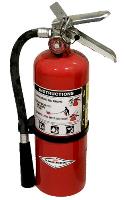These safety pioneers had a vision and made life safer for others. Their inventions in rail and traffic safety, chemical and electrical safety, aerospace safety, communications and health greatly improved how we work and live today.
They were innovators and inspirations—and they made a difference.
Thomas Martin
Born a free man, Martin received a patent on March 26, 1872, for the first fire extinguishing suppressing apparatus, which later was remodeled as a portable extinguisher.
 Granville Woods
Granville Woods
Woods made train communication between the station and other trains possible by inventing the “Synchronous Multiplex Railway Telegraph.” He is also responsible for inventing automatic air brakes for trains and the “third rail” concept, all being used in mass-transit rail systems today.
 George Washington Carver
George Washington Carver
Carver's studies on soil depletion found that farmers could utilize crops such as peanuts to support their soil as well as their way of life. He taught at the Tuskegee Institute for nearly 50 years, sharing his knowledge of farming techniques and how crop rotation could improve the quality of soil and produce crops that were better for human consumption.
 Garrett A. Morgan
Garrett A. Morgan
Morgan’s safety helmet was used by the allied forces in World War I and served as the prototype for the modern-day respirator. He also patented the directional traffic signal, later changed to three colors, which now directs traffic on most roads and highways around the world.
 Emmett Chappelle
Emmett Chappelle
In 1958, Chappelle joined the Research Institute for Advanced Studies in Baltimore, a division of the Martin Marietta Corporation that was famous for designing airplanes and spacecraft. There, Chappelle discovered that even one-celled plants such as algae, which are lightweight and can be transported easily, can convert carbon dioxide to oxygen. This discovery helped to create a safe oxygen supply for astronauts.
 Marie Van Brittan Brown
Marie Van Brittan Brown
Brown developed a video monitoring system consisting of four peep-holes and a camera, which could be utilized to view the activity around her home. The system allowed her to view someone at her front door, hear their voice and was equipped with a button to notify police, if necessary. This invention would pave the way for the video security systems that homes and businesses use today.
 Patricia Bath
Patricia Bath
Bath became the first African-American female physician to receive a patent for a medical invention. Her invention, the “Laserphaco Probe” (forerunner to Lasik) transformed eye surgery. It used a laser device that safely and quickly removed cataracts from patients' eyes and gave them the ability to see again.
 Rodney Slater
Rodney Slater
Slater was appointed U.S. Secretary of Transportation in 1997. During his term, the department repaired thousands of the country’s bridges, improving them to their best condition in years; acted aggressively to improve the safety of the U.S. rail system; averted a strike by Amtrak; and initiated a program to get all Americans to buckle their seatbelts.
 Mae Jemison
Mae Jemison
Jemison was the first African American woman to travel into space on the Space Shuttle
Endeavour in 1992. During her time in space, Jemison studied weightlessness and motion sickness of the
Endeavour crew. Prior to Joining NASA, Jemison served in the Peace Corps, developing guidelines for health and safety issues.
 Dr. Ashanti Johnson
Dr. Ashanti Johnson
Johnson is a pioneer in the field of chemical oceanography. Her research activities have included how biogeochemical indicators can help us understand the impacts of previous events on marine, estuarine and freshwater environments. She is also dedicated to advancing diversity in STEM-related fields and mentoring the next generation of scientists.
We Are Committed to Diversity, Equity and Inclusion
We aim to provide an organizational culture that is diverse, inclusive and advances equity across all aspects of our Society. We know that bringing together, listening to and incorporating a wide range of perspectives makes us stronger and workplaces safer.
Learn more